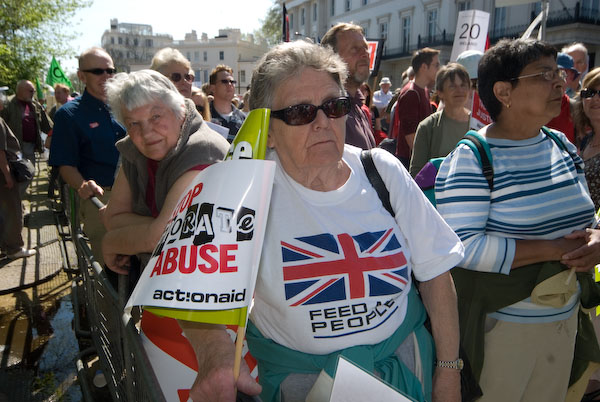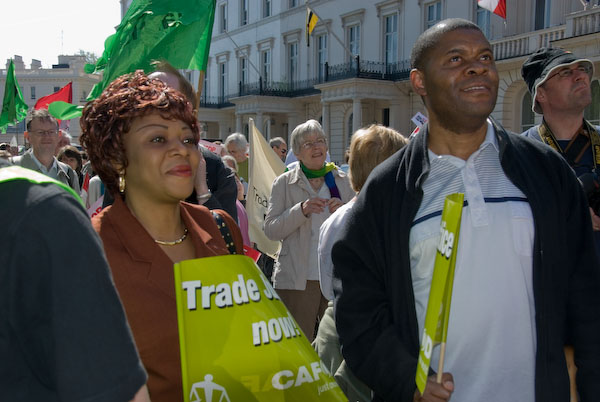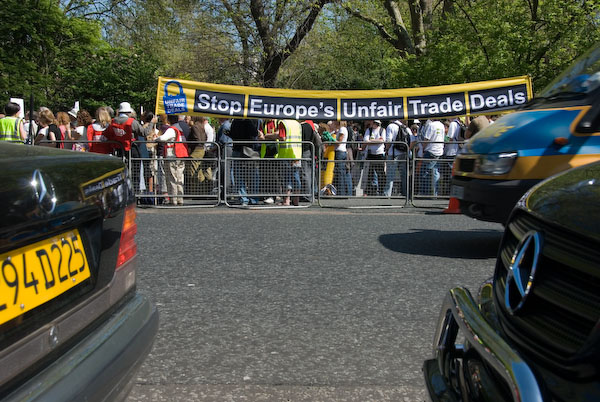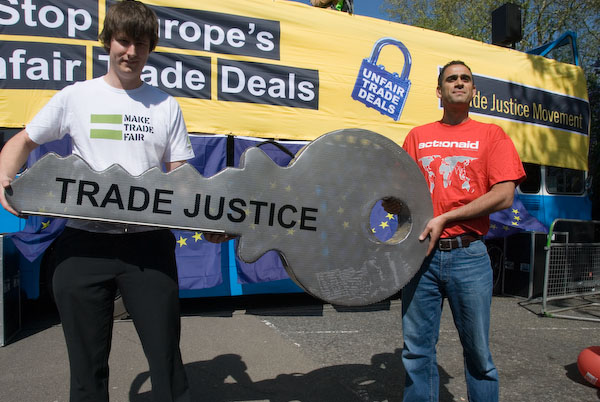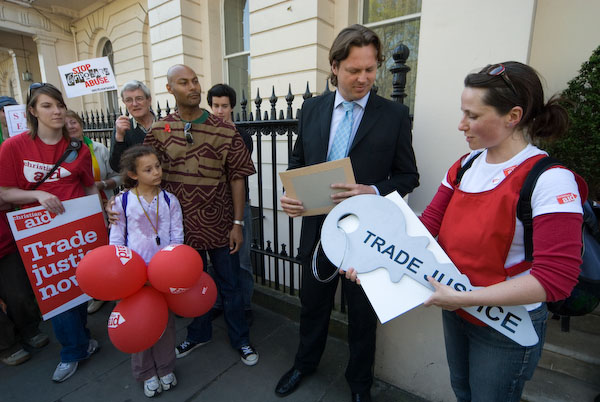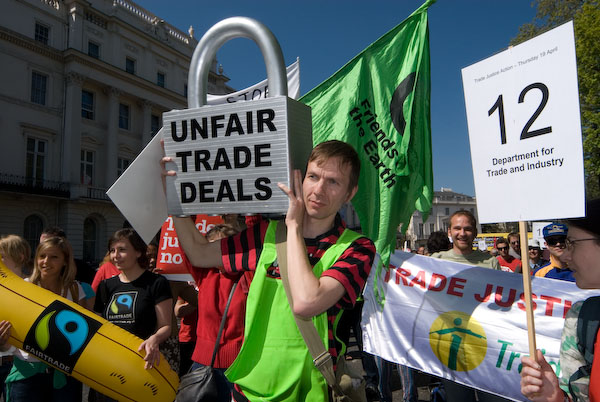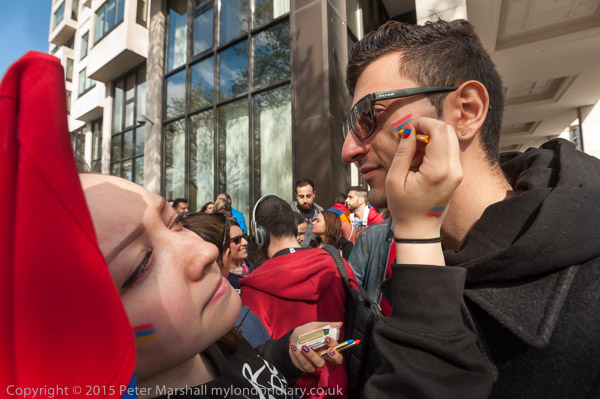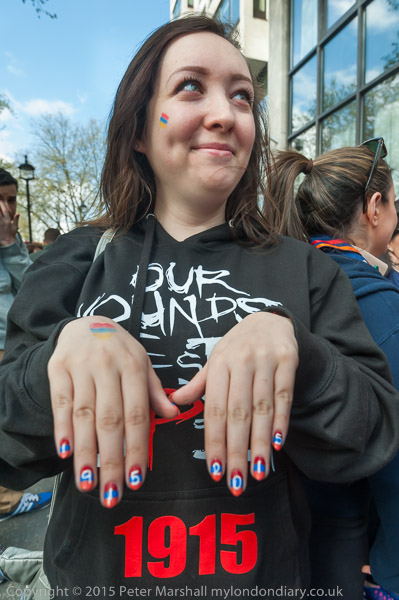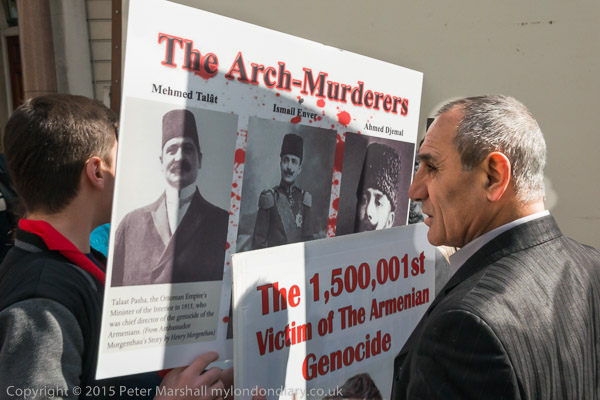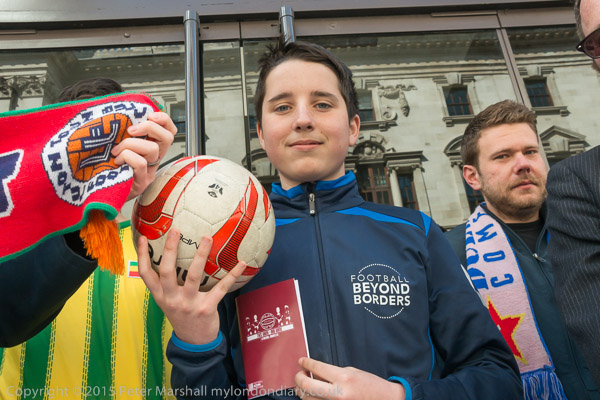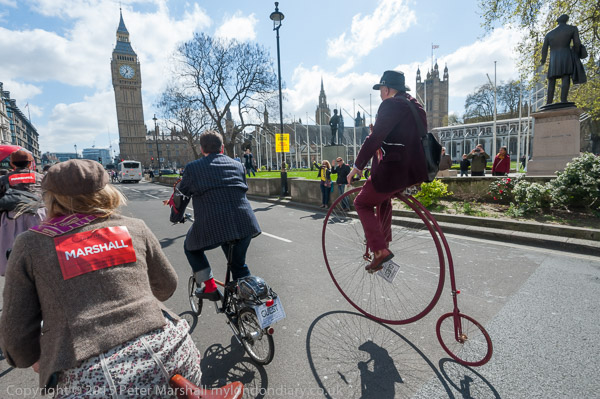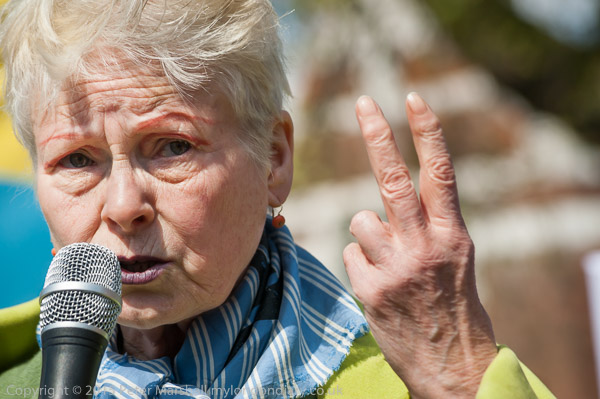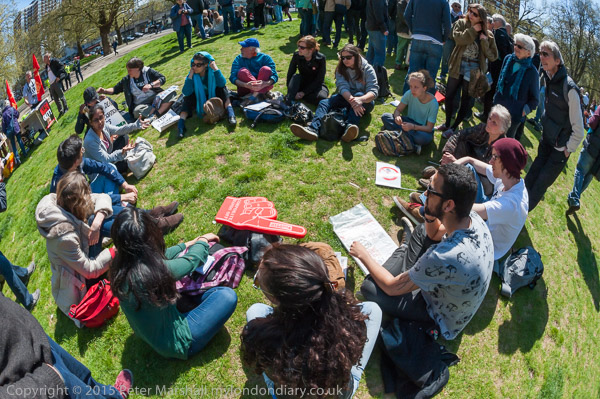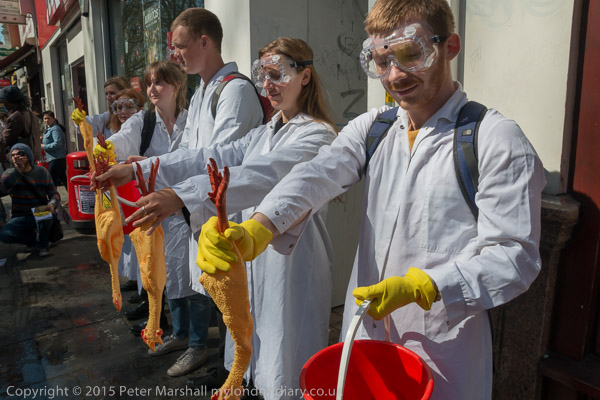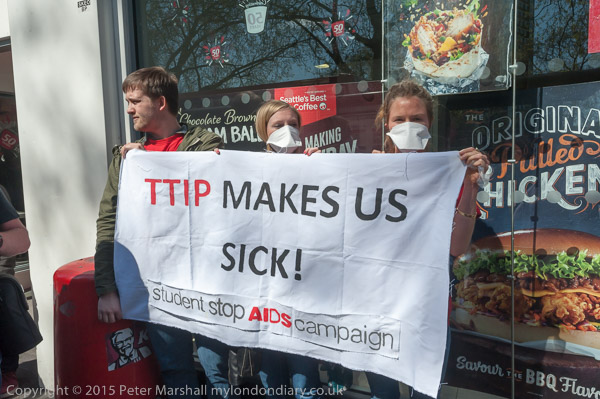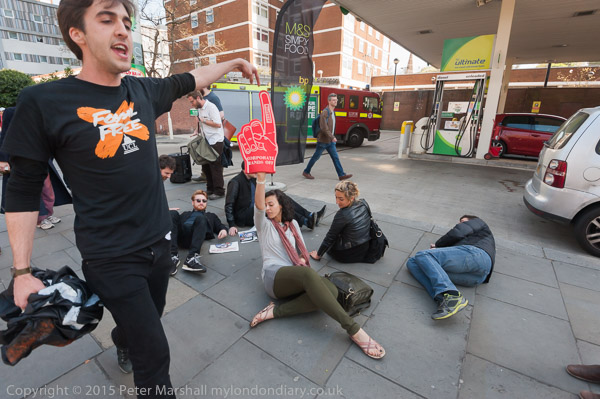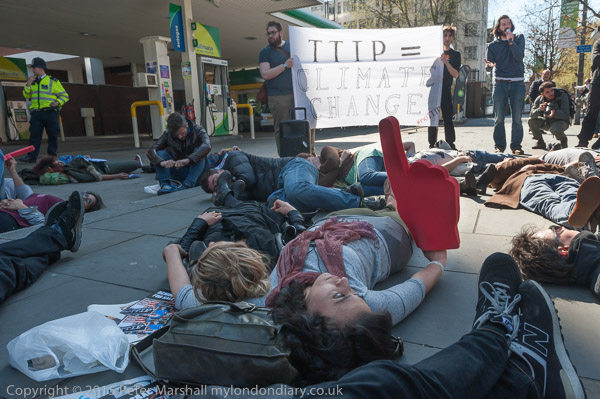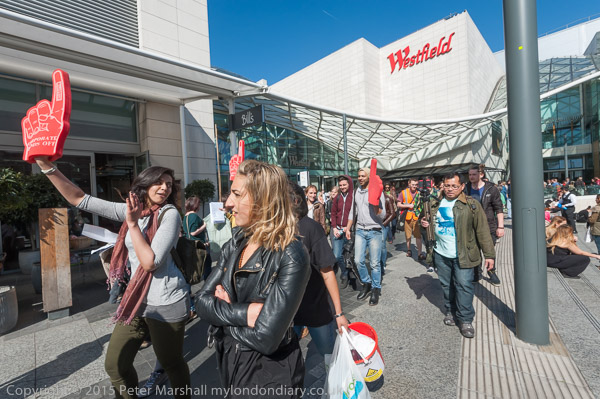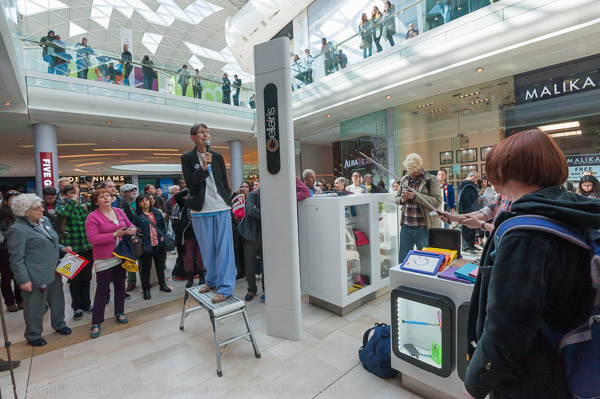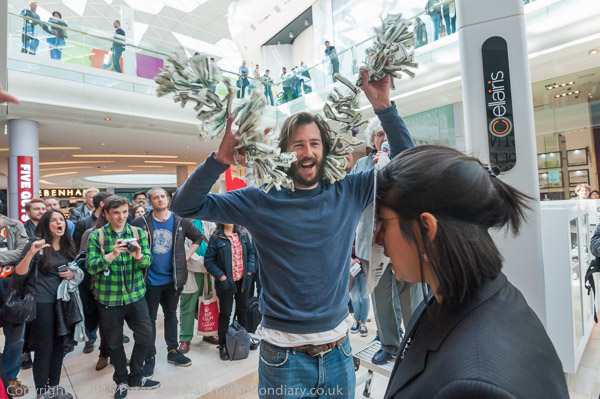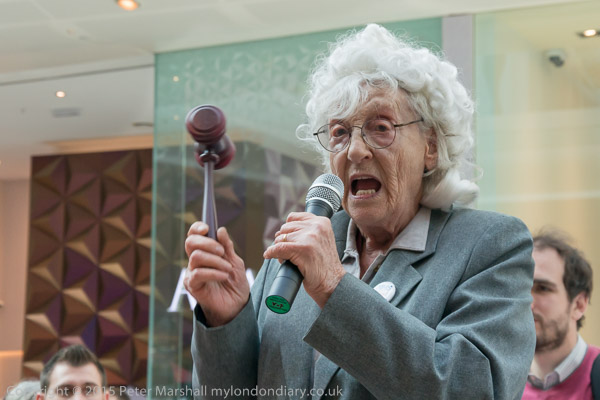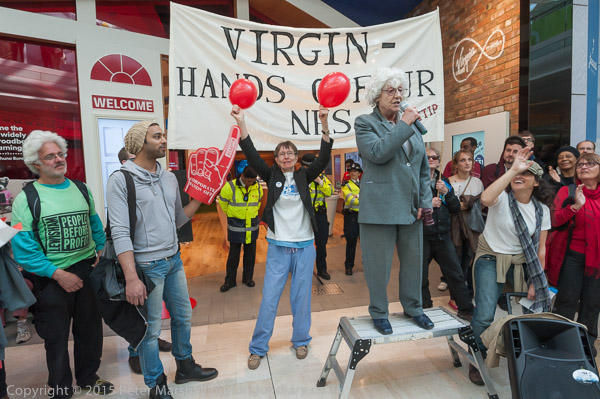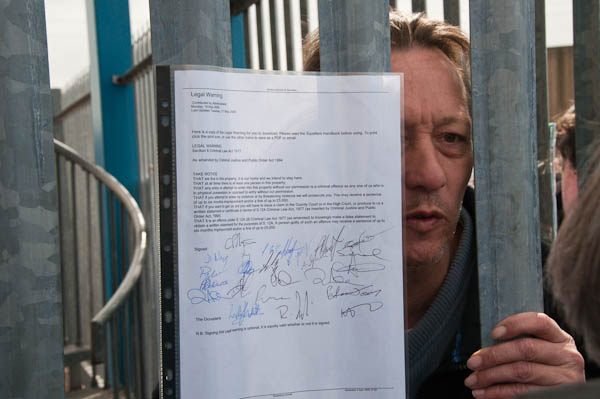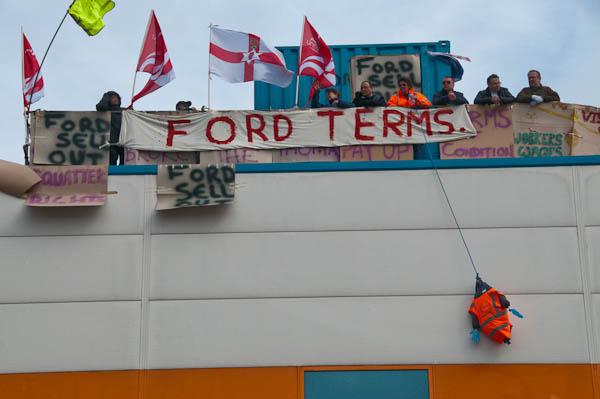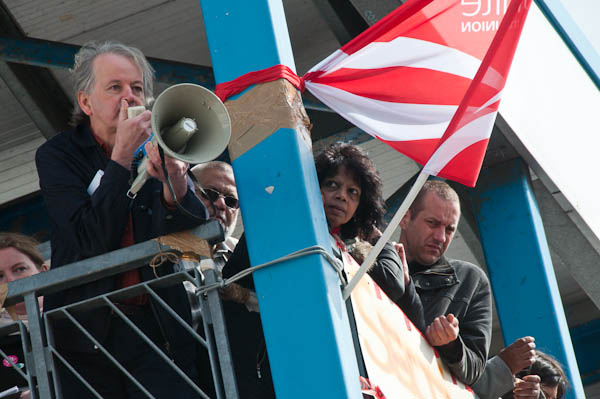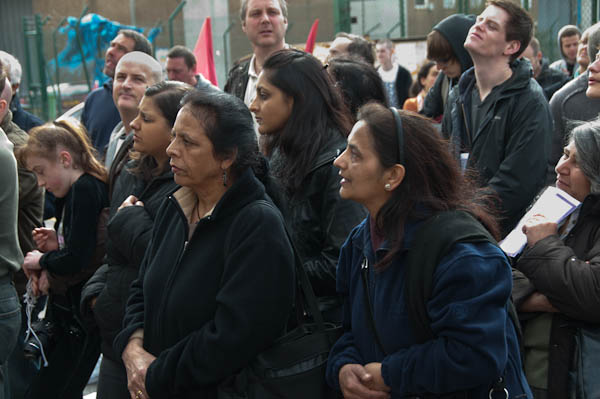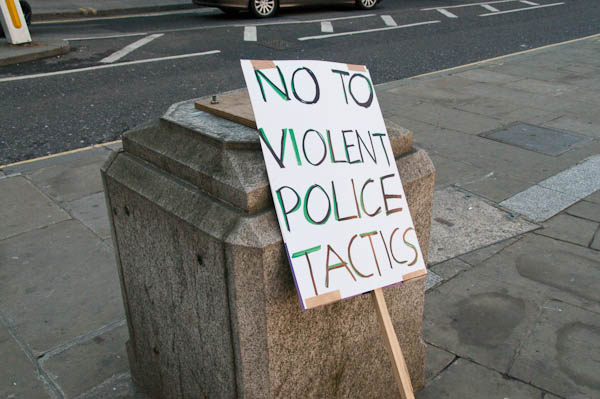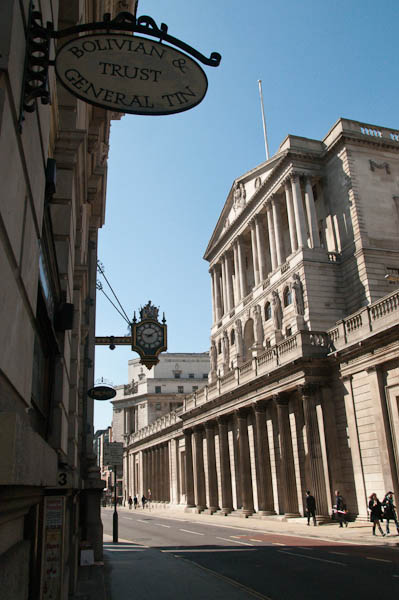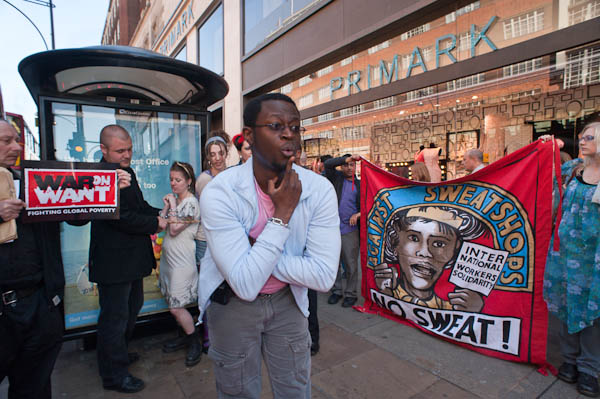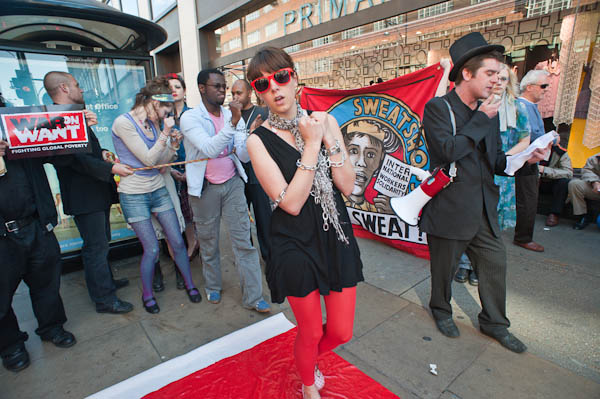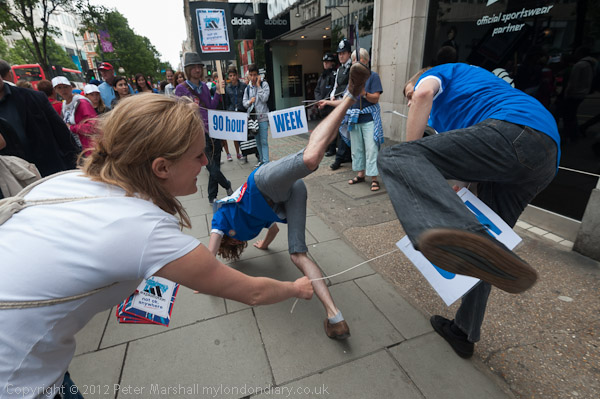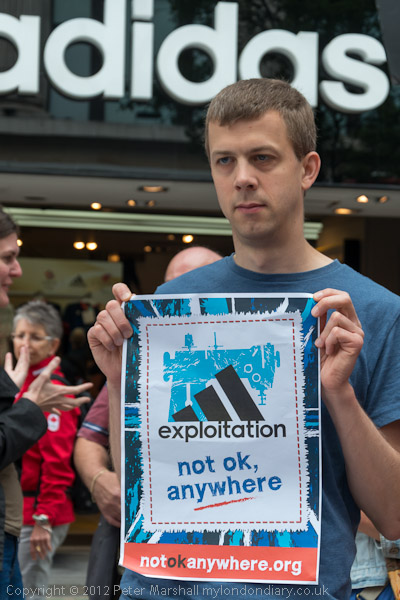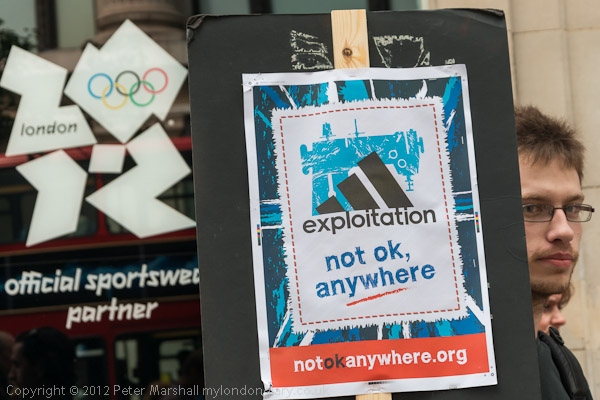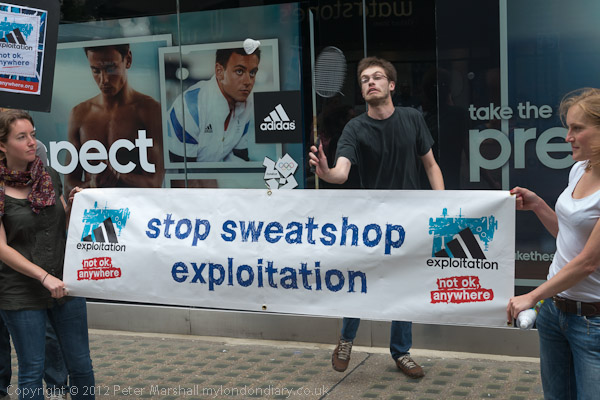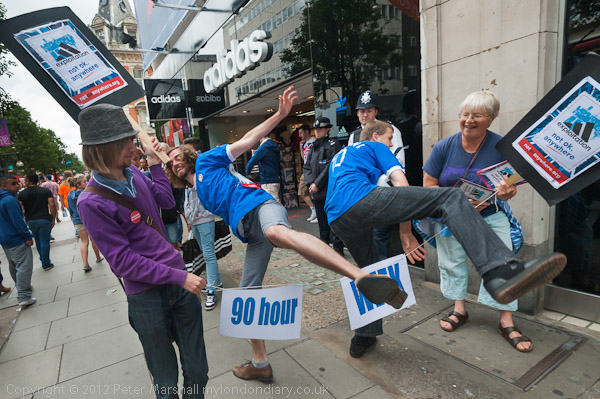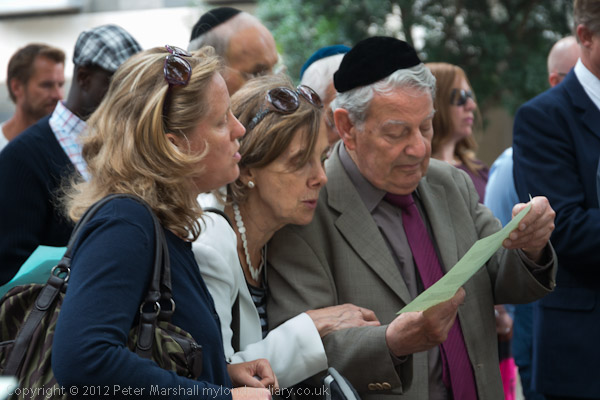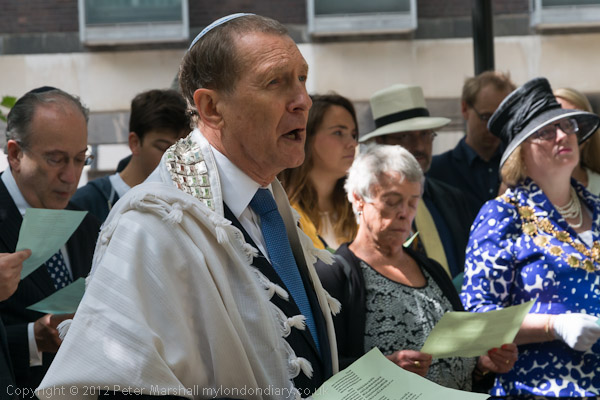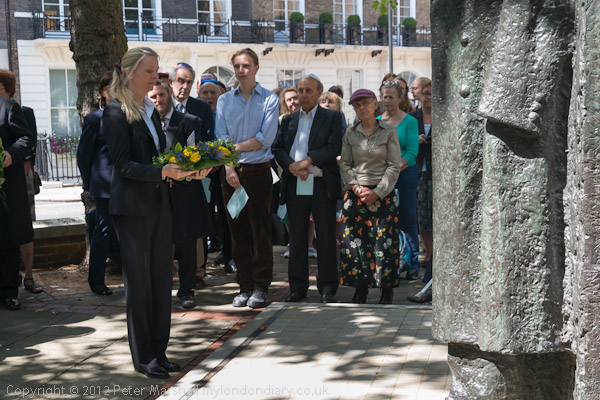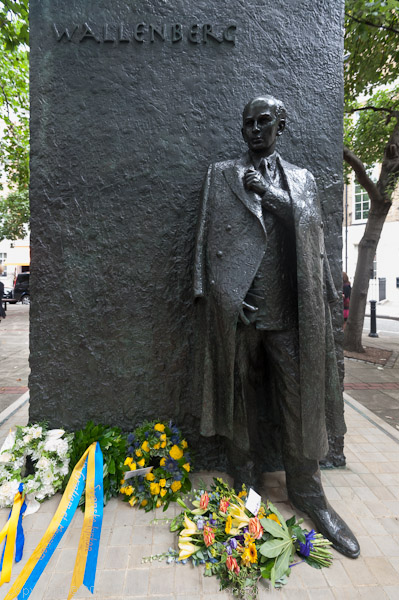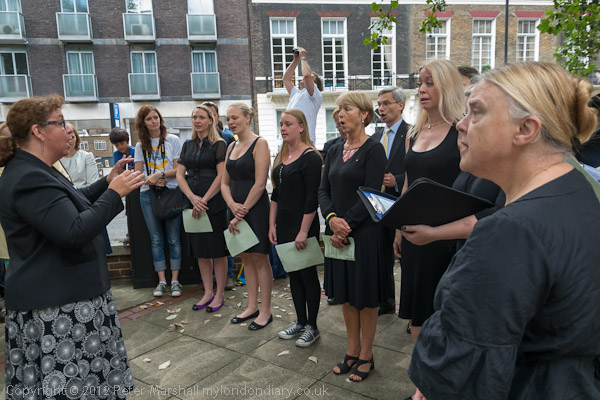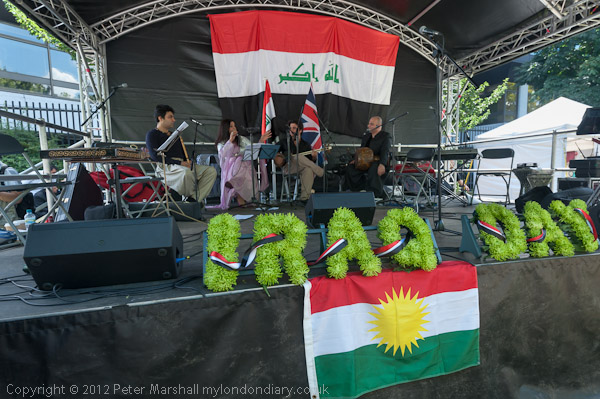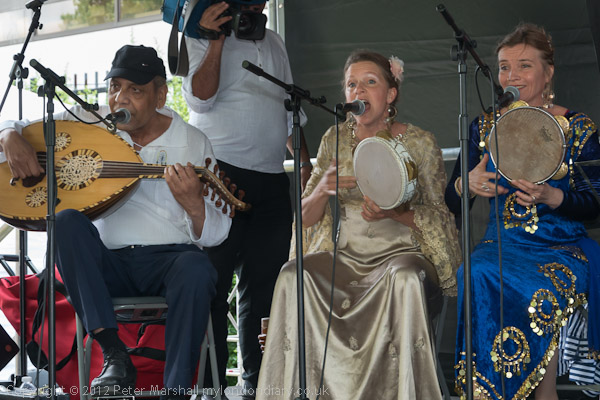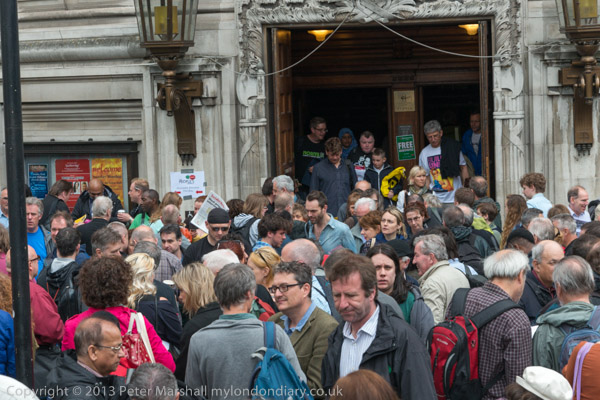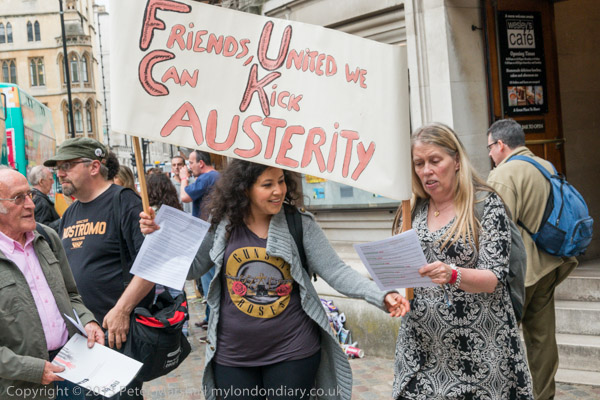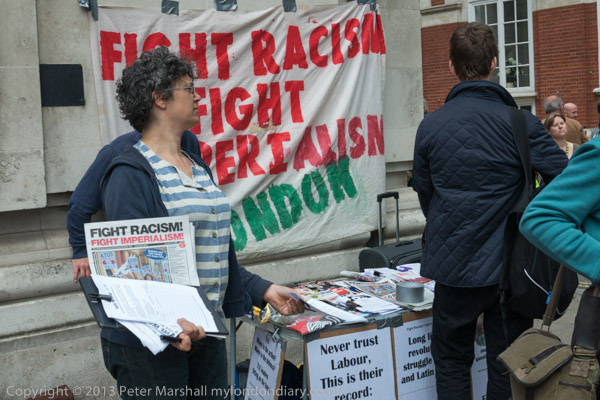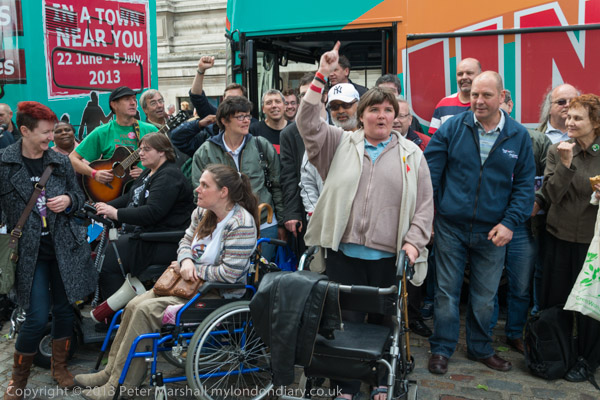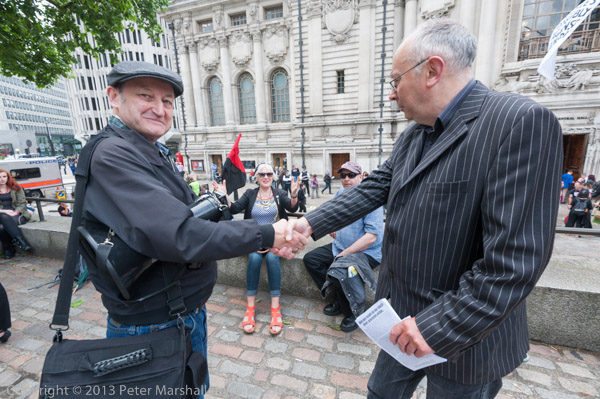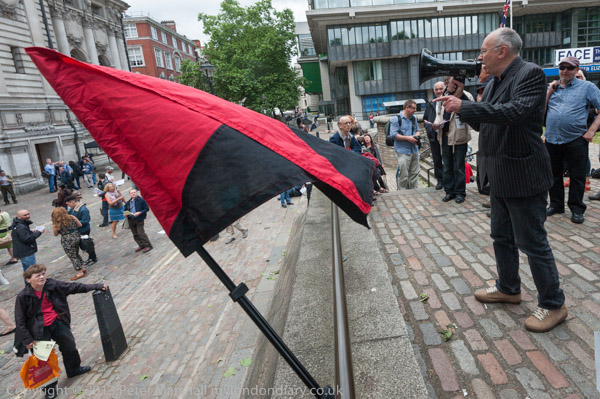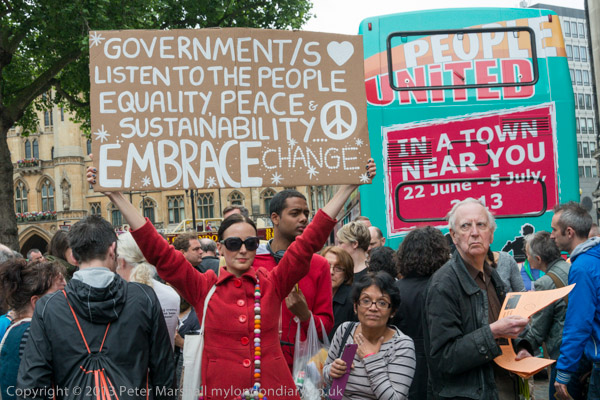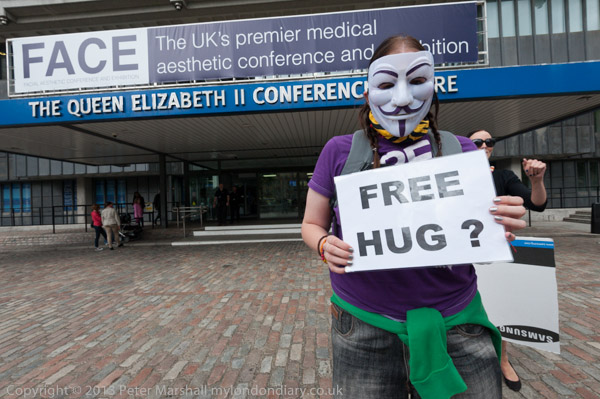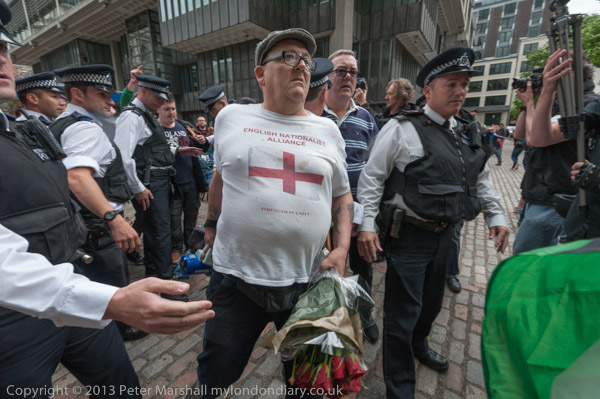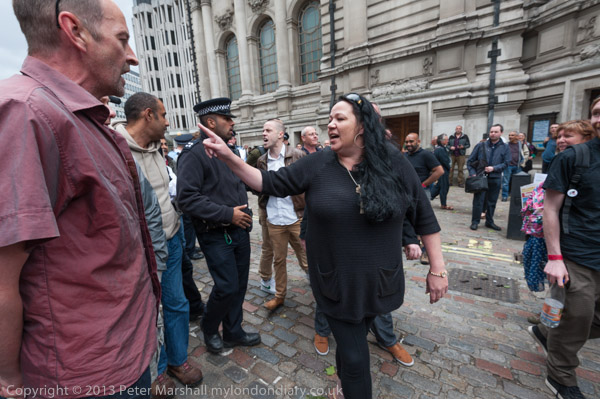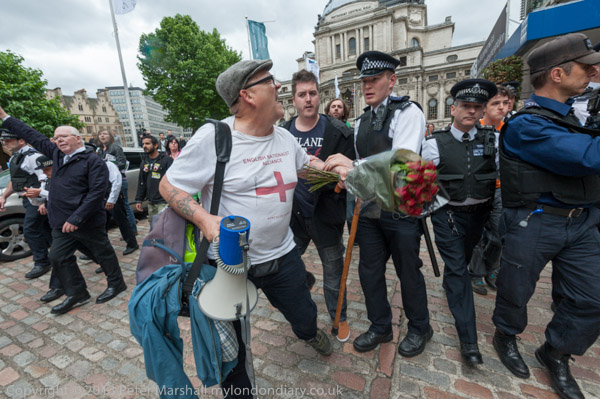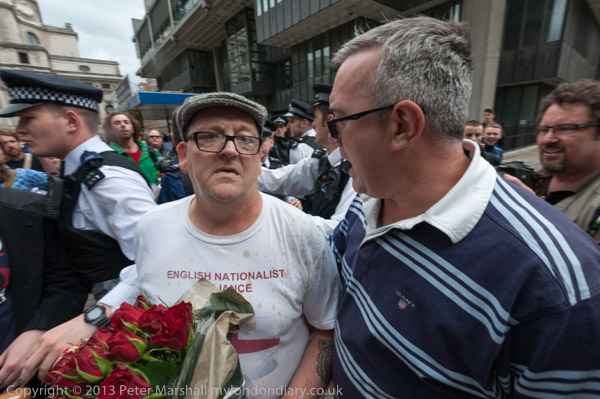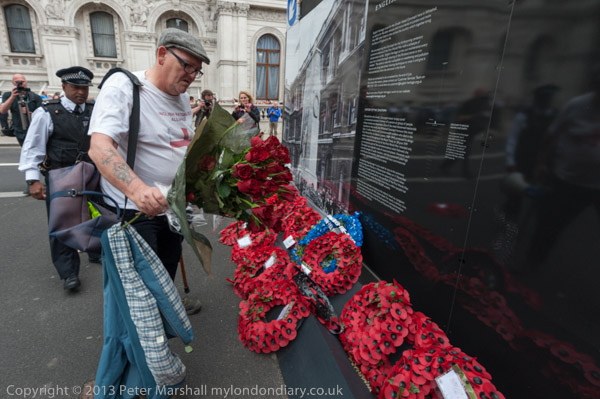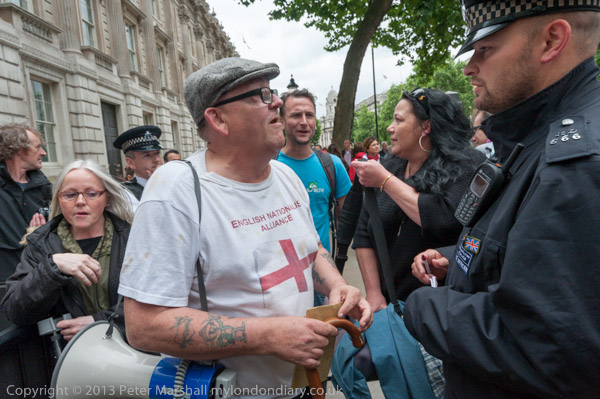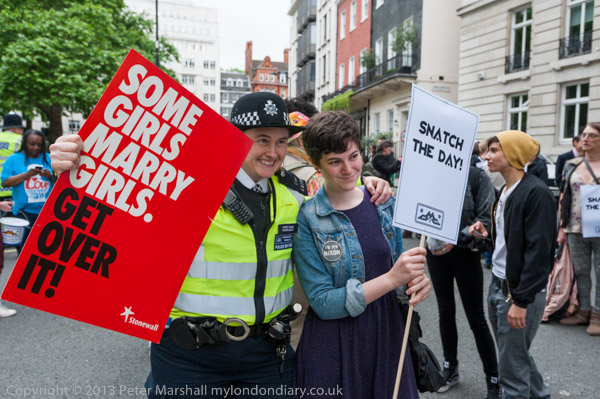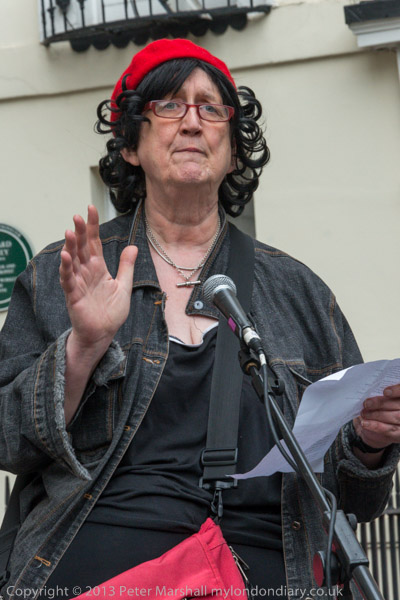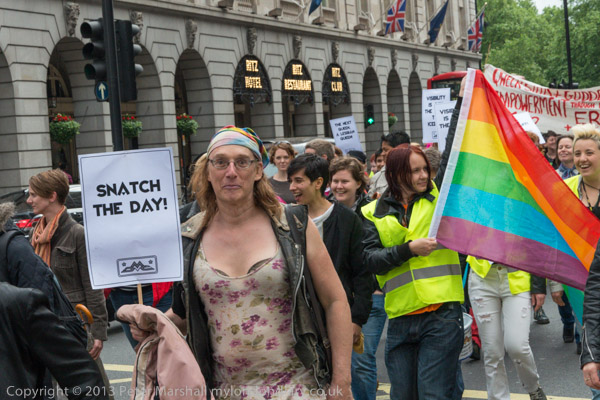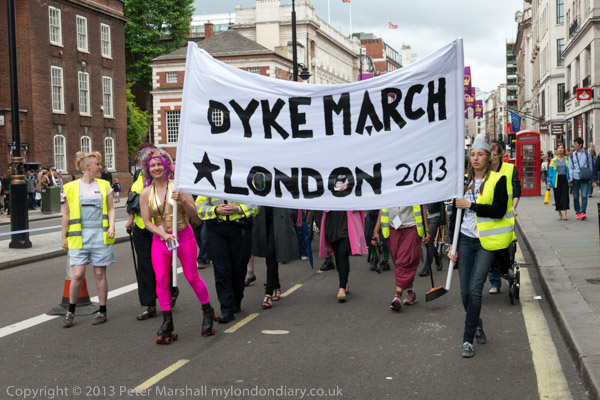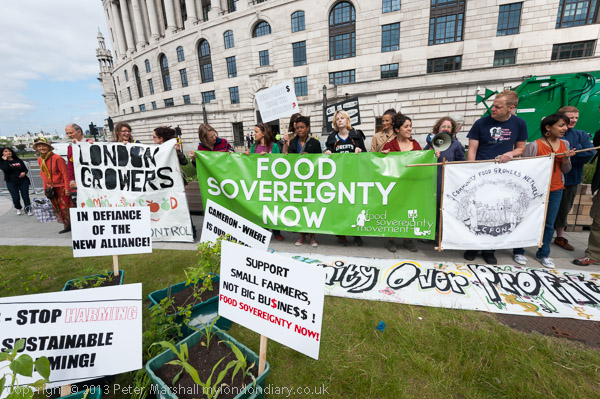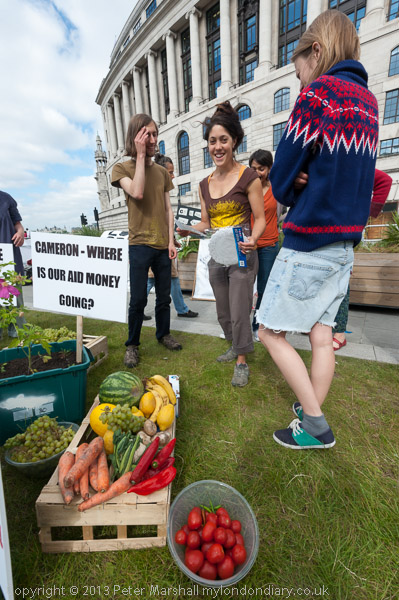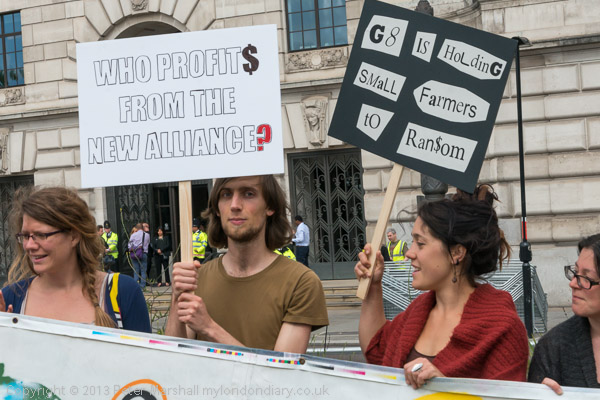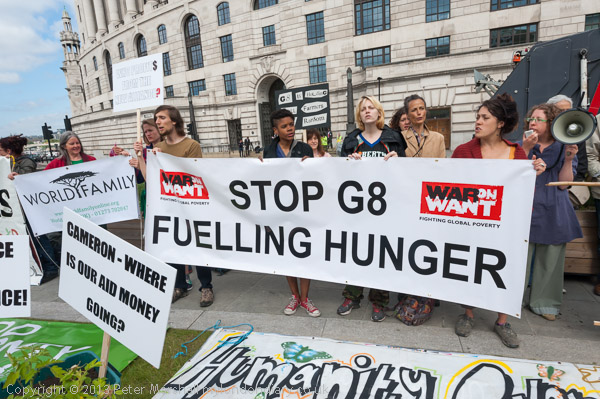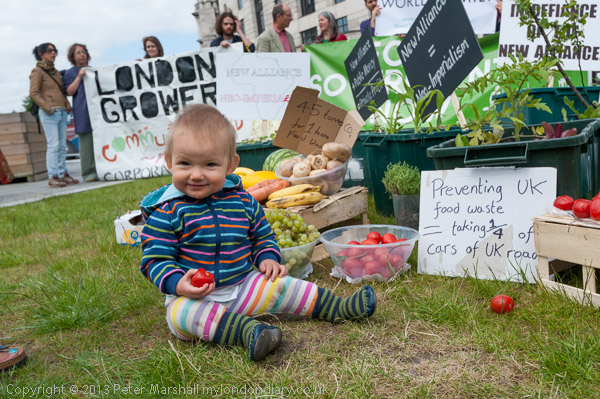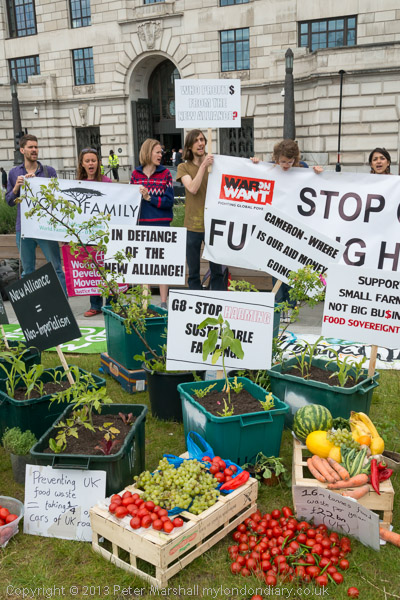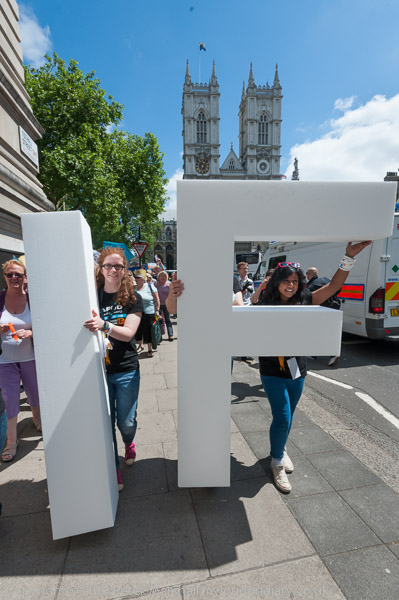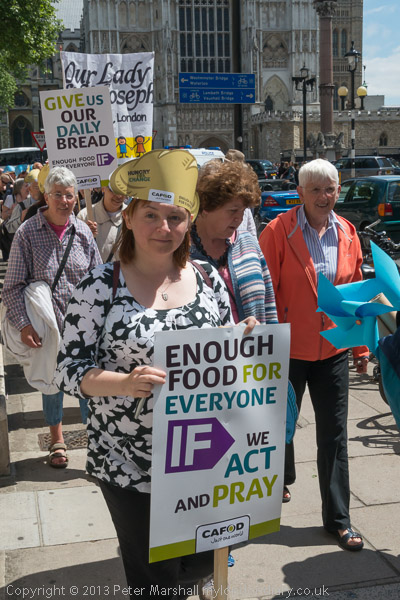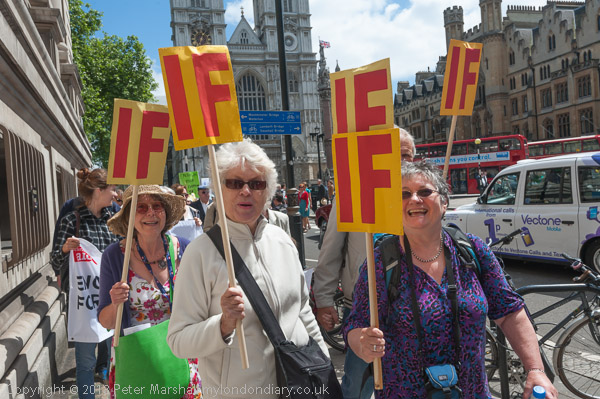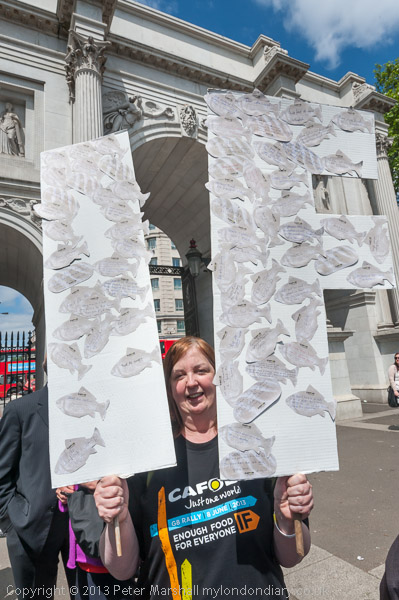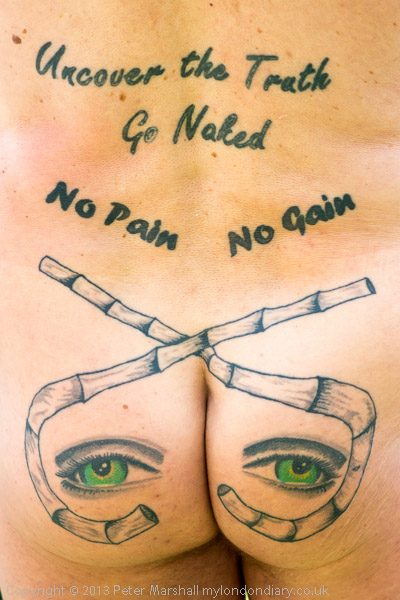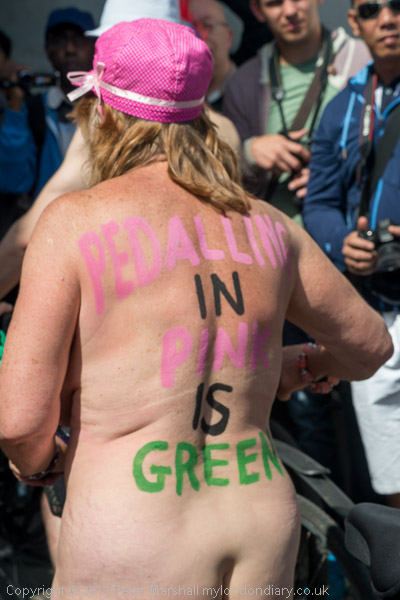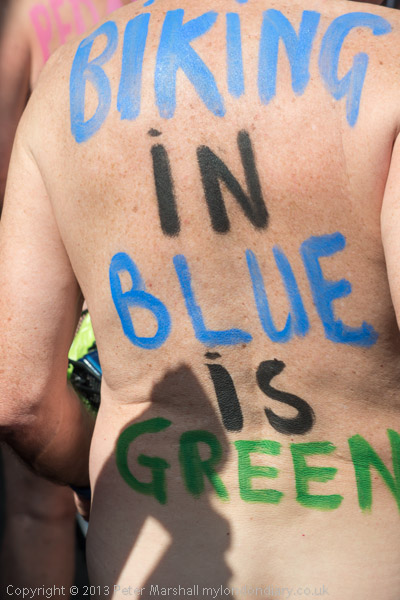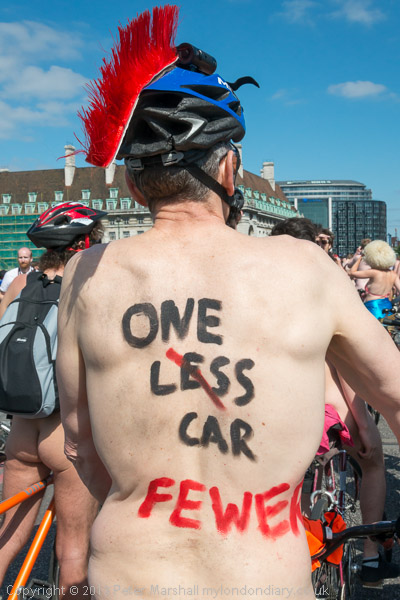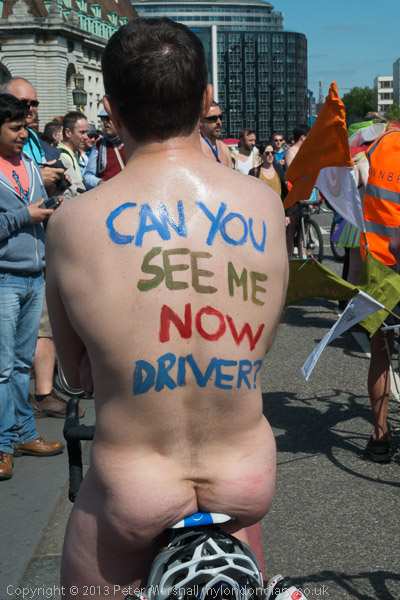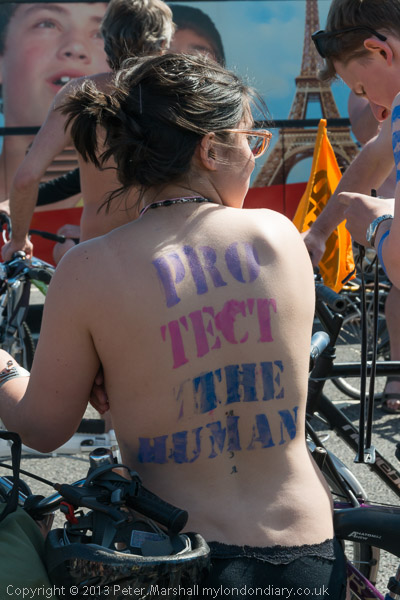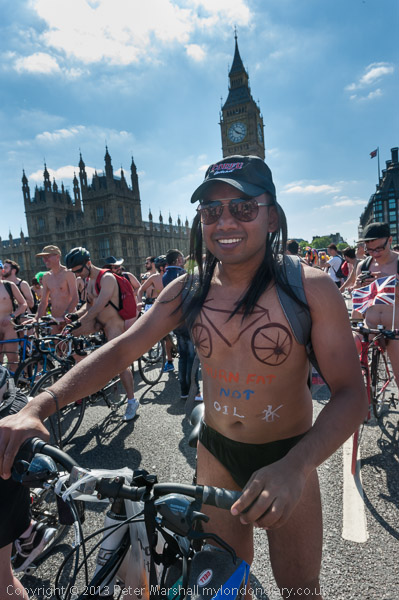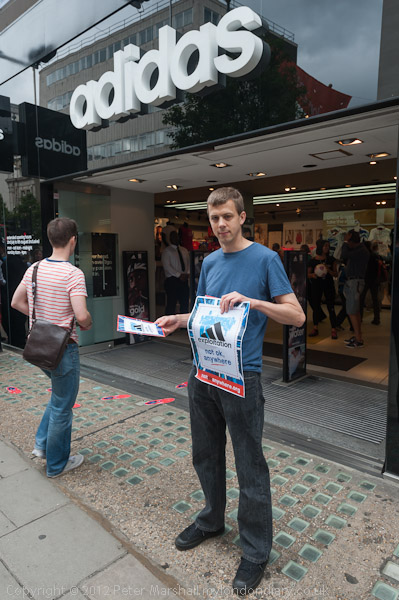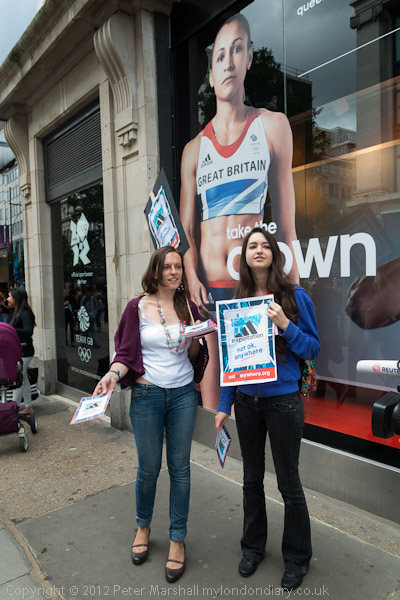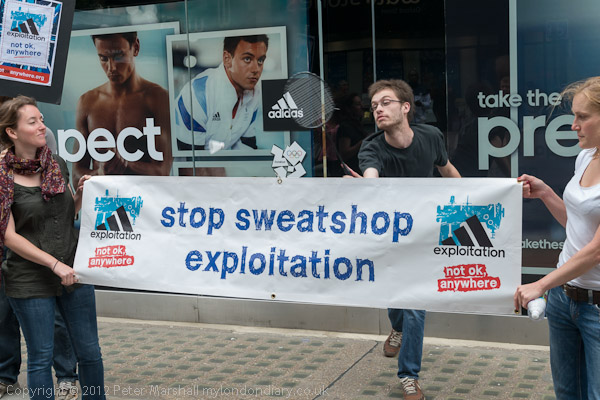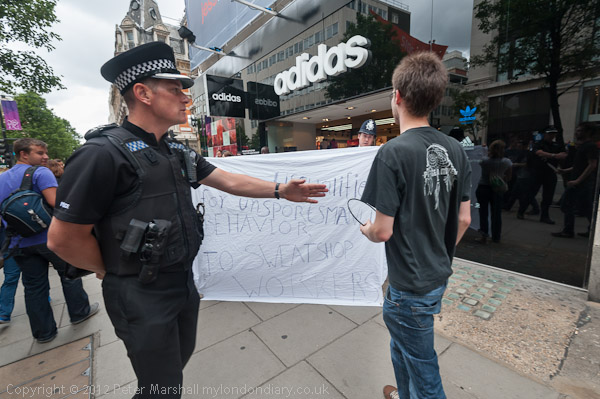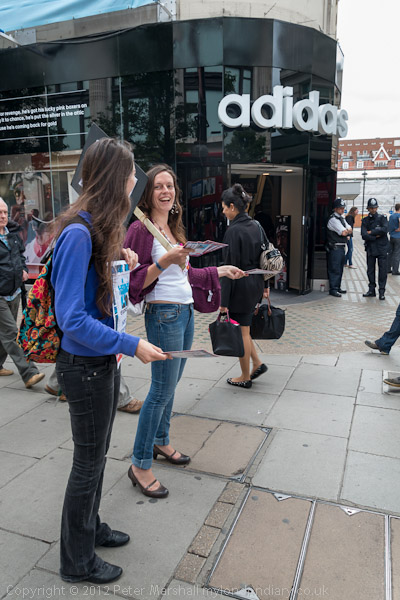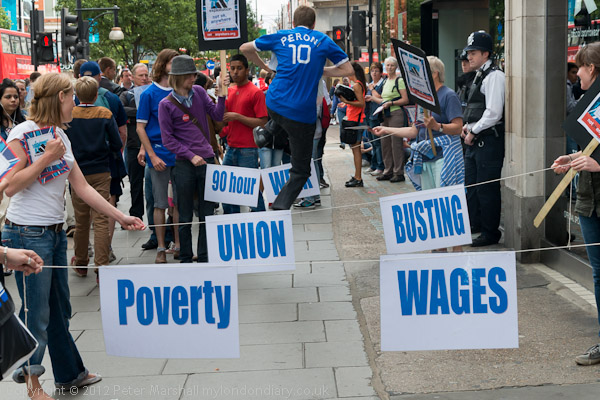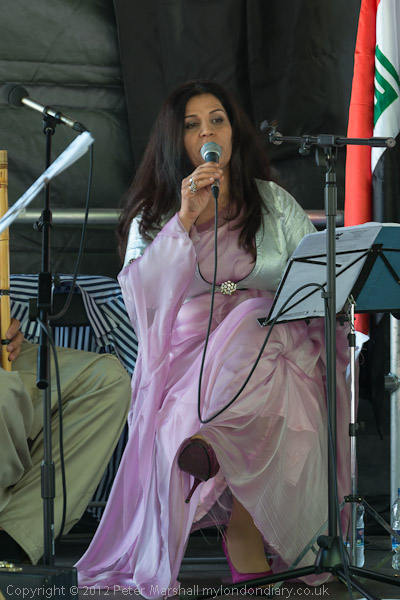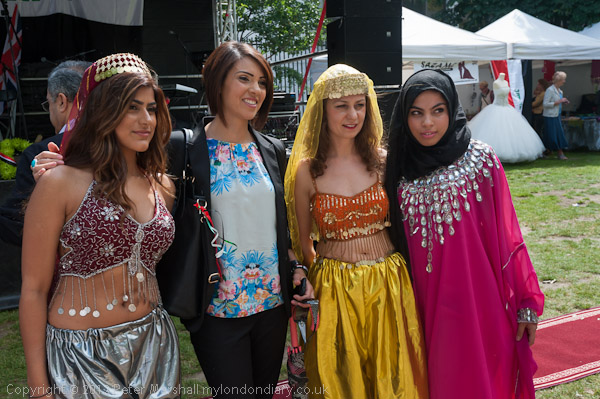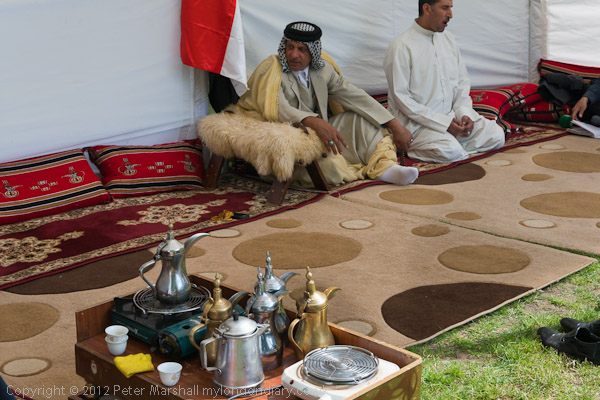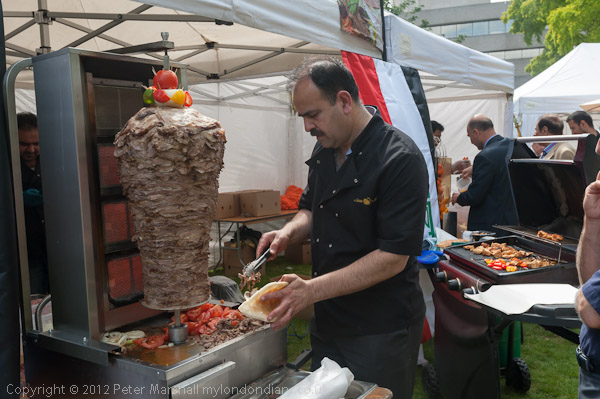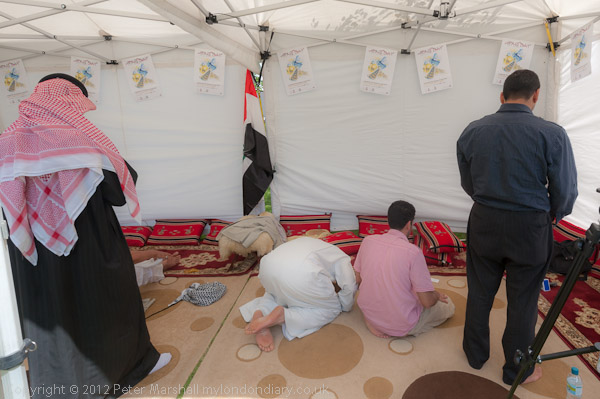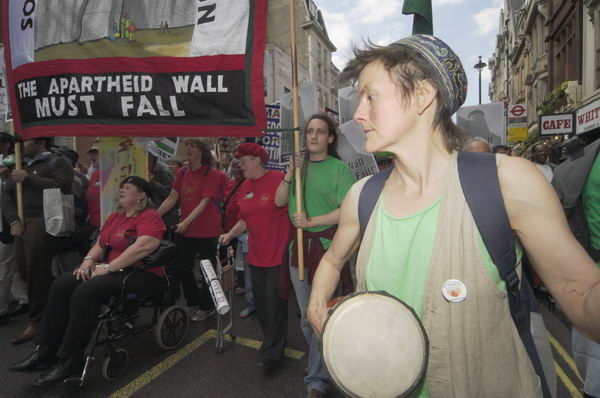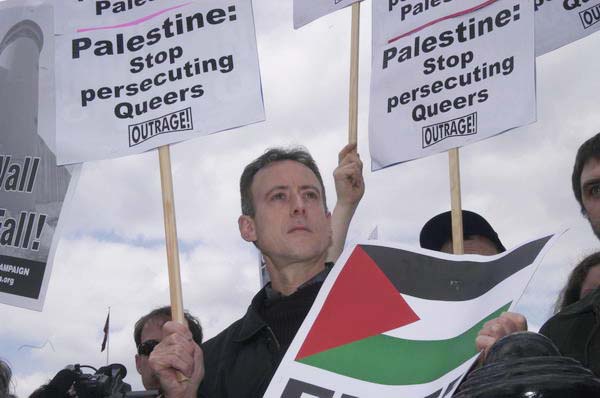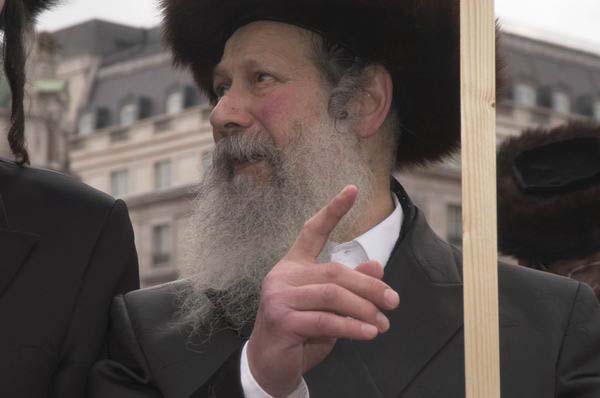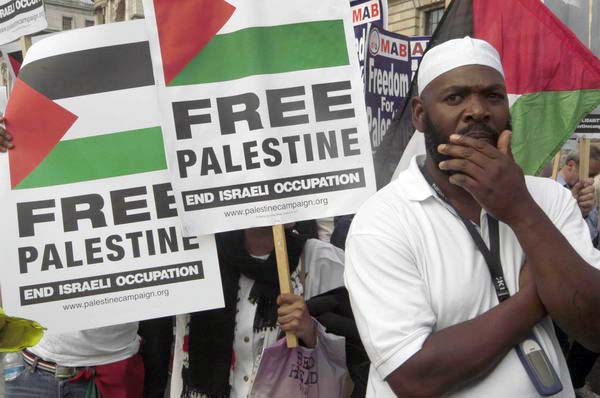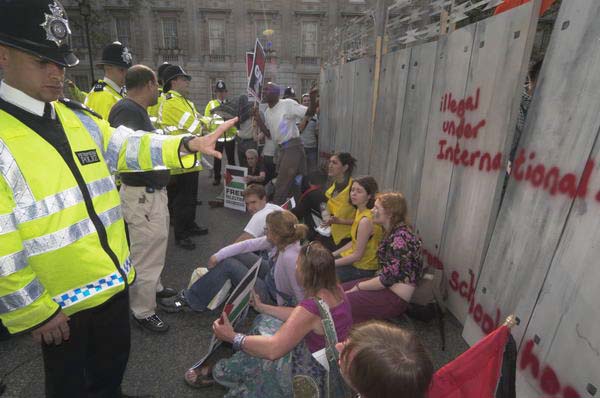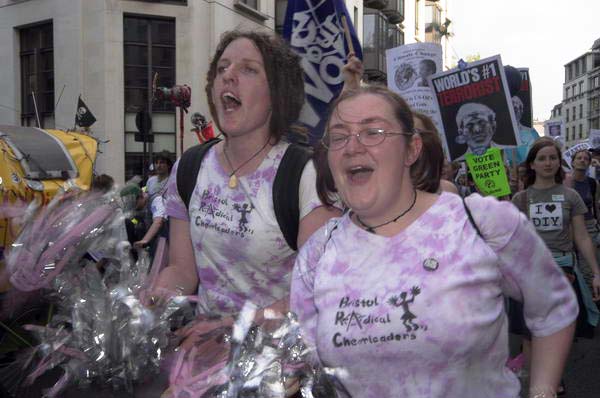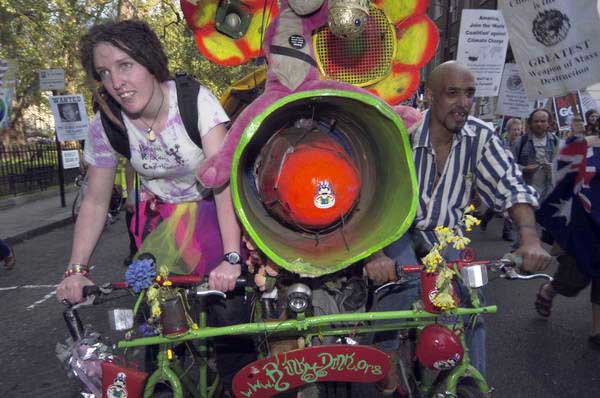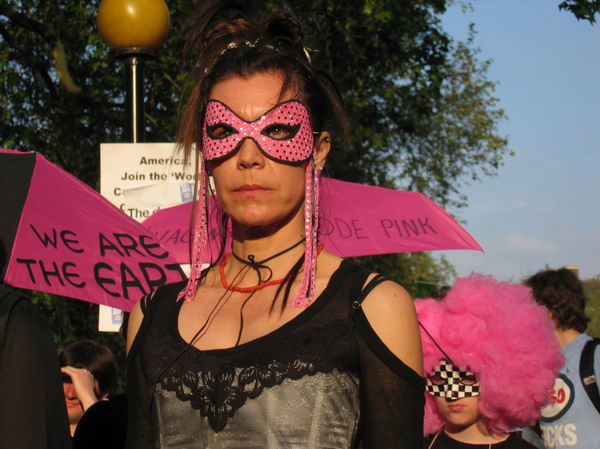Westminster, Wednesday 2nd November 2005
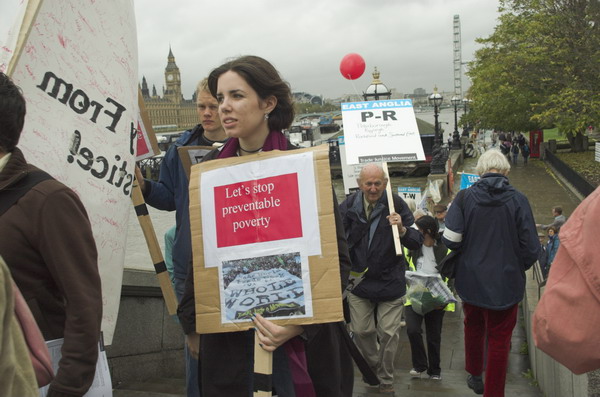
Trade Justice means policies that are “designed to deliver a sustainable economic system that tackles poverty and protects the environment.”
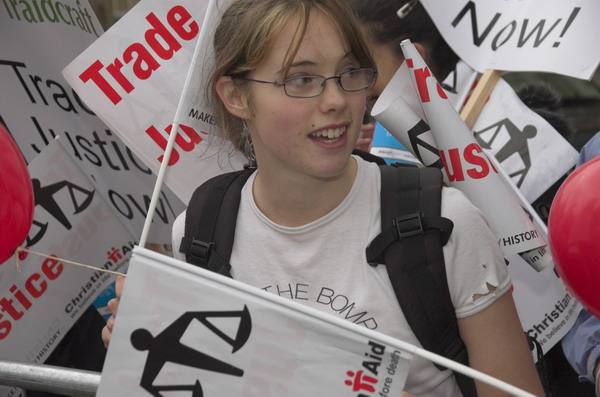
The Trade Justice movement includes “trade unions and charities focusing on sustainable development, human rights and the environment.”
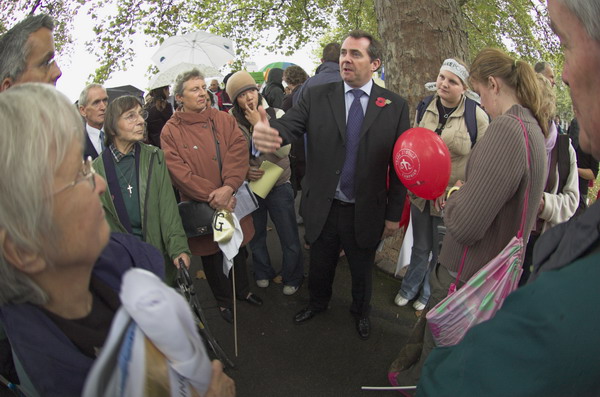
Trade Justice is different from ‘free trade‘ in that it calls for trade rules that enable poor countries to chose solutions to end poverty and protect the environment rather than those that allow international businesses to profit at the expense of people and environment and would ensure that the trade rules are made transparently and democratically.

The Trade Justice Movement was formed in 2000 to bring together organisations promoting trade justice to work together more effectively. As you can see from my pictures this event included Christian Aid, Cafod, Make Poverty History, Traidcraft, War on Want, World Development Movement and others, and people had come from around the country to meet their MPs.

Many MPs had agreed to come out from Parliament to meet their constituents and they had agreed to do so at a long line of meetings with some in front of parliament and others through into Victoria Tower Gardens and on across Lambeth Bridge.

They came out despite the weather – and you can see many umbrellas in the pictures I took. There were frequent showers, some heavy and I got rather wet – as I commented “you can’t hold an umbrella and take pictures like this.”

My camera was reasonably weather-sealed and I try to wipe the raindrops off the front of the lens before each pictures but zoom lenses which I use for almost all pictures tend to get condensation on inner glass surfaces from damp air drawn during zooming and become unusable until they have dried out. I gave up taking pictures after two hours, but my wife who had gone up to lobby our MP had to wait a further three hours to see him.
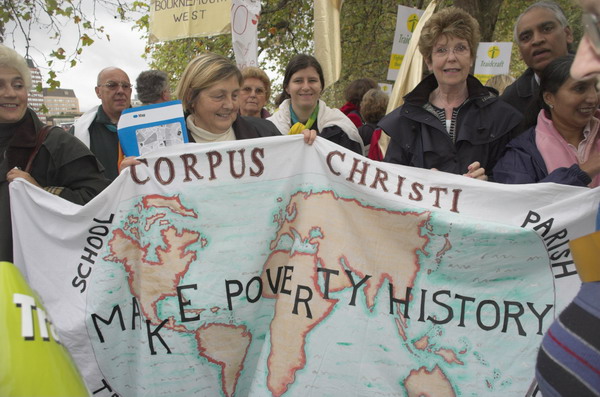
Although many MPs came out to meet their constituents, some used the occasion as a way to speak to them in a rather patronising manner about how they didn’t really understand the real business of international trade rather than really listen and take on the arguments they were making.

I think this lobby will have had very little effect compared to the lobbying of major companies and professional lobbyists on their behalf who give MPs large amounts of cash and VIP tickets to sporting and other event etc. We know the huge amounts MPs have received and declared from various sources – including the private health companies and various sources connected to Israel and its hard to believe that they don’t get results from their cash – and it seems clear they do from some government statements and policies. Surely all such donations should be banned.
Anyway, here is what I wrote back in 2005:
“8,000 or more of us queued up along both banks of the Thames from Westminster to Lambeth bridge and beyond to take part in a mass lobby for trade justice. People continued to queue, some for four hours and more to see talk to their members of parliament, despite a long wait in often heavy pouring rain. We arrived at Westminster around 12.15 and it was almost 5pm before my wife was able to meet our MP.

“Others were more fortunate, with a number of MPs from all parties coming out onto the street and into Victoria Tower Gardens to meet their constituents. The lobby aimed to make clear the difference between ‘fair trade’ and ‘free trade’ and to stress the necessity to make trade fair so that economically weak nations have a chance to develop.

“Despite the lousy weather (not good for photography or queuing) spirits were high among those waiting, and there were some street theatre performances that helped.”
Many more pictures from the event here on My London Diary.
Flickr – Facebook – My London Diary – Hull Photos – Lea Valley – Paris
London’s Industrial Heritage – London Photos
All photographs on this page are copyright © Peter Marshall.
Contact me to buy prints or licence to reproduce.

